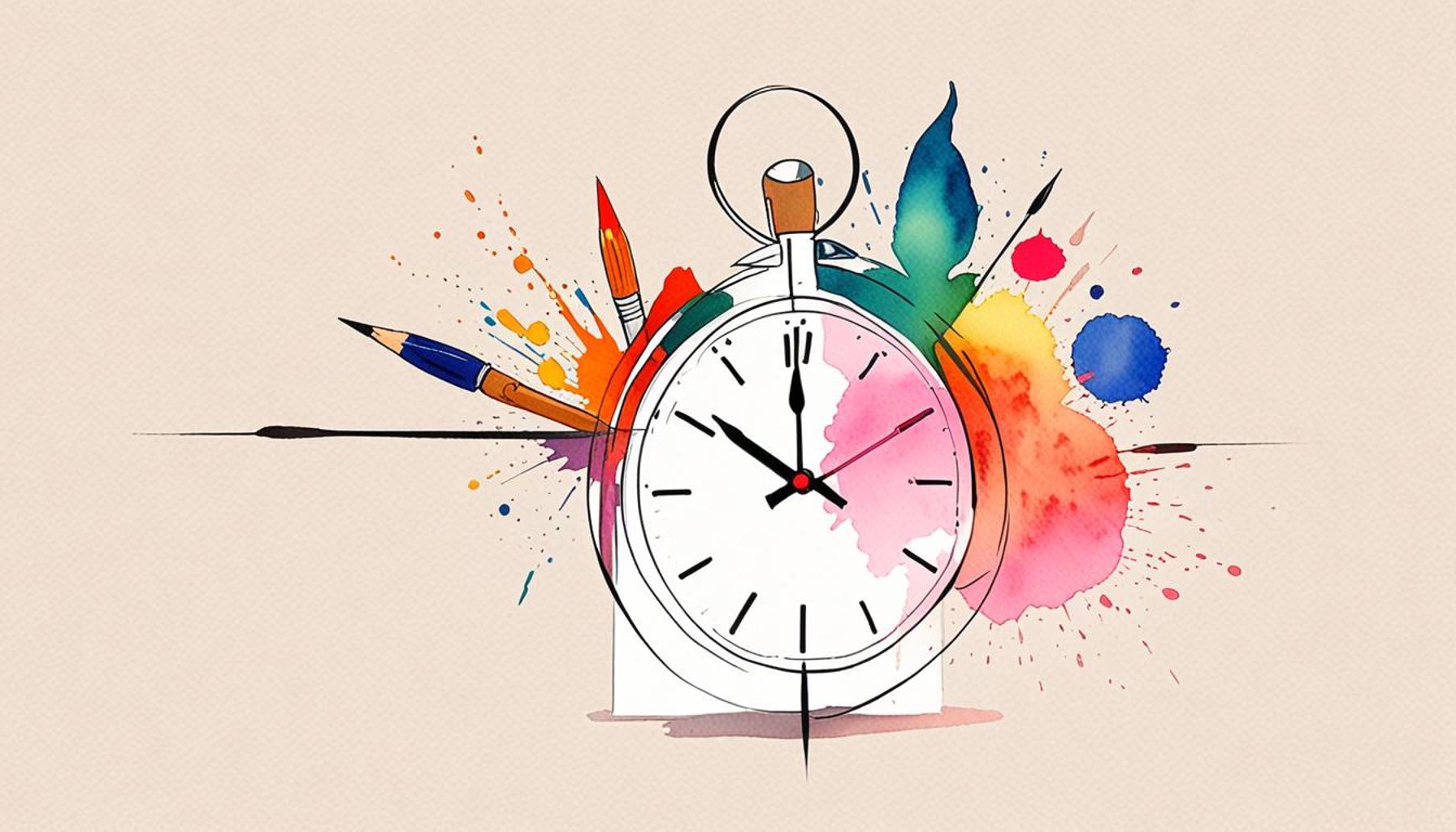How Minimalism Can Transform Your Time Management: Practical Tips for a More Efficient Routine

Embrace Simplicity for Enhanced Productivity
In the chaos of modern life, where we are inundated with endless responsibilities and constant distractions, managing your time efficiently can feel overwhelming. The good news? Minimalism offers a path to clarity and focus, fundamentally transforming the way you approach both daily tasks and long-term schedules. By stripping away unnecessary layers, you can prioritize what truly matters in your life and work.
Understanding Minimalism
Minimalism transcends the straightforward idea of decluttering physical space. It encompasses a holistic approach that also nurtures mental and emotional well-being. Here are some essential aspects:
- Intentional Living: This principle urges you to evaluate your possessions and commitments, focusing on what adds genuine value to your life. For example, instead of holding onto clothes you never wear, consider donating them. This not only simplifies your closet but also fosters a mindset of appreciation for what you truly need.
- Reduced Distractions: By minimizing physical clutter in your workspace, you can significantly decrease mental distractions. Studies have shown that a clean environment contributes to enhanced concentration, allowing you to engage more deeply in tasks without the temptation of visual disturbances.
- Increased Clarity: A minimalist approach helps simplify decision-making processes. With fewer choices and distractions, you can make quicker, more effective decisions—whether you are choosing a project at work or planning your weekend activities.
The Connection to Time Management
Adopting a minimalist mindset can profoundly reshape your daily routines, yielding numerous benefits that lead to greater productivity:
- Streamlined Tasks: By focusing solely on essential tasks, you can tackle important projects without unnecessary complications. For instance, rather than multitasking across various minor jobs, dedicating uninterrupted time to one major task can improve quality and completion time.
- Better Prioritization: Learning to identify what truly needs your attention can drastically reduce stress and increase your effectiveness. Implement techniques like the Eisenhower Matrix, which categorizes tasks based on urgency and importance, to help clarify your priorities.
- Enhanced Focus: With a minimalist perspective, you can maintain concentration on high-impact activities that drive results. Techniques such as the Pomodoro Technique, which alternates focused work sessions with short breaks, can further enhance this focus.
Are you ready to discover how minimalism can reshape your approach to time management? Implementing these principles can lead to a more fulfilling life, where productivity flourishes and stress diminishes. Stay tuned as we explore practical tips to create a seamless, efficient routine, ensuring you leverage the full potential of minimalism in everyday life.
DIVE DEEPER: Click here to discover how small habits can transform your daily routine

Transform Your Daily Routine with Minimalism
As we dive deeper into the transformative power of minimalism, it becomes clear that it is not merely about reducing physical possessions; rather, it’s a profound shift in how we approach time and commitments. Minimalism’s impact on time management can lead to a smoother, more efficient daily routine, allowing you to focus on things that matter most. Here are some practical strategies to integrate minimalism into your time management practices:
1. Declutter Your Schedule
A minimalist lifestyle begins with evaluating your commitments just as you would assess your belongings. By identifying which tasks and engagements truly deserve your time, you can reclaim valuable hours in your week. Consider these steps:
- Conduct a Time Audit: Take a week to track how you spend your time. Identify activities that are time-consuming but provide little value. This awareness can help you eliminate distractions and focus on high-impact tasks.
- Say No More Often: Embrace the liberating power of a simple “no.” Commit to only those activities and obligations that align with your goals and values. This shift not only frees up time but also reduces mental clutter.
- Limit Meetings: Evaluate the necessity of your meetings, especially in workplaces where time is often wasted on lengthy discussions. Consider shorter meetings or an email summary in place of face-to-face sessions to respect everyone’s time.
2. Prioritize with Purpose
To effectively manage your time, you must learn to prioritize purposefully. This means focusing on the tasks that will make the most significant impact quickly. Incorporate these techniques into your routine:
- The Two-Minute Rule: If a task can be done in two minutes or less, do it immediately. This approach prevents small tasks from piling up, often leading to overwhelming feelings.
- Chunk Your Tasks: Break larger projects into manageable chunks. This practice not only simplifies your workload but also provides opportunities for small wins, giving you a sense of accomplishment as you progress.
- Review Weekly: Set aside time at the end of each week to reflect on what you’ve accomplished and what lies ahead. This allows you to adjust your plans in alignment with your priorities, emphasizing continual improvement.
3. Design a Successful Environment
The environment in which you work can significantly influence your productivity. Here’s how to create a minimalist workspace that fosters efficiency:
- Limit Physical Distractions: Clear your desk of unnecessary items. Maintain only what you need for the task at hand to keep your mind focused on work, not on clutter.
- Utilize Digital Tools: Use technology to streamline your workflow. Applications like Trello or Todoist can help manage tasks with ease, reducing the time spent on organization and increasing the time spent on execution.
- Create a Calm Atmosphere: Consider elements like lighting, color, and sound in your workspace. A serene environment can enhance your focus and make the workday more enjoyable.
By embracing minimalism in your time management practices, you can pave the way for greater efficiency and satisfaction in both your personal and professional life. The next step is to explore specific minimalist techniques that can make this transformation even more profound—stay tuned for actionable strategies that will streamline your daily routine and elevate your productivity.
Embrace the Core Principles of Minimalism
Incorporating minimalism into your daily routine not only streamlines your time management but also promotes a clearer mindset. The essence of minimalism lies in focusing on what truly matters. By eliminating distractions and unnecessary tasks from your schedule, you can prioritize significant activities that drive productivity. For instance, adopting a minimalist approach to meeting setups can significantly reduce time spent in discussions and enhance decision-making efficiency. Instead of lengthy meetings, consider short, focused sessions that allow for quick updates and actionable takeaways.
Declutter Your Digital Space
A vital aspect of improving time management through minimalism is tidying up your digital workspace. This involves organizing your email inbox, files, and digital tools to minimize chaos and distractions. Set aside time weekly to archive or delete old emails and files. Utilize productivity apps that emphasize simplicity and ease of use. A well-structured digital environment not only saves time but also helps you locate necessary information quickly, streamlining your workflow and reducing stress.
Implement the Two-Minute Rule
The two-minute rule is a popular tactic among productivity enthusiasts that can significantly enhance how you manage tasks. If something requires less than two minutes to complete, do it immediately. This straightforward approach prevents small tasks from piling up and consuming mental energy. By tackling minor responsibilities right away, you free up mental space for larger projects, resulting in a more organized workflow that adheres closely to the principles of minimalism.
Set Realistic Goals
Minimalism promotes clear, achievable goals that align with your values and vision. Instead of overwhelming yourself with an extensive to-do list, set a few crucial priorities each day. This shift not only allows you to focus your energies but also fosters a sense of accomplishment when you successfully meet these specific objectives. Tracking your progress can be done through simple, visual tools such as bullet journals or digital interfaces that promote clarity and motivation.
| Advantages | Description |
|---|---|
| Increased Focus | Eliminating distractions helps you concentrate on significant tasks. |
| Reduced Stress | A decluttered environment contributes to lower anxiety levels. |
By integrating these strategies into your routine, not only do you harness the power of minimalism, but you also cultivate an environment that enhances efficiency and promotes well-being.
DISCOVER MORE: Click here to learn how intentional design can enhance your minimalist journey
Embrace Minimalist Mindsets for Effective Time Management
Beyond the practical strategies for decluttering your time and environment, adopting a minimalist mindset can drastically enhance your ability to manage time effectively. Embracing this perspective creates a foundation of clarity and focus that propels your daily routine into a realm of efficiency. Here are some key mindset shifts and methodologies that can reshape how you approach time management:
1. Emphasize Quality Over Quantity
In a world that often values busyness, it’s essential to shift your focus from how much you do to the quality of what you accomplish. By honing in on high-value tasks, you can achieve more impact in less time. Here are some techniques to reinforce this mindset:
- Identify Core Values: Reflect on what truly matters in your life and career. Determine what tasks are essential for achieving your personal and professional goals. This self-awareness will help you prioritize effectively.
- Track Results, Not Hours: Rather than tallying hours worked, measure your success by the outcomes you achieve. Set clear, quantifiable goals and focus your efforts on completing activities that lead to those results.
- Limit Your Focus: Tackle fewer projects at a time, ensuring that you have the bandwidth to devote your energy to each task. This single-tasking approach fosters deeper engagement and enhances overall output.
2. Build Flexible Routines
While routines can often feel restrictive, a minimalist approach encourages flexibility, enabling you to adapt to changing circumstances without spiraling into chaos. Here’s how to facilitate this flexibility:
- Time Blocking: Allocate specific time slots for essential tasks while allowing for adjustable periods for unexpected commitments. This method promotes focused work sessions while maintaining the ability to pivot when necessary.
- Implement Buffer Zones: Designate time slots within your day as buffer zones to account for interruptions or extended discussions. This breathing room minimizes stress and allows you to approach your schedule with a more relaxed mindset.
- Be Open to Change: Regularly reassess your routines and be willing to alter them according to your evolving priorities. This adaptability helps ensure that your time management strategies continue to align with your personal growth and changing circumstances.
3. Foster Mindfulness in Daily Practices
Integrating mindfulness into your daily routine can significantly enhance your connection to the present moment, leading to better decision-making and increased productivity. Here are ways to cultivate mindfulness while managing your time:
- Practice Morning Rituals: Start your day with deliberate rituals that center your mind, such as meditation, journaling, or gentle exercise. A mindful morning sets the tone for a focused and productive day ahead.
- Disconnect to Reconnect: Periodically unplug from digital distractions to fully engage in your tasks. Consider implementing tech-free zones or times, giving yourself the space to think deeply and work without interruption.
- Reflect on Your Day: At the end of each day, take a moment to reflect on what went well and what could improve. This reflective practice fosters self-awareness and encourages better time management strategies over time.
By embracing these minimalist mindsets and methodologies, you can unlock the potential of your time management practices, allowing for a more streamlined and fulfilling daily routine. The art of minimalism serves as a powerful tool, showing how intentionality in your actions can multiply your effectiveness and enhance your overall satisfaction in life.
DISCOVER MORE: Click here to learn how design impacts sustainability
Conclusion: Transforming Time Management through Minimalism
In conclusion, adopting a minimalist approach to time management can profoundly reshape the way we structure our daily lives, leading to increased efficiency and fulfillment. By emphasizing quality over quantity, you can focus on meaningful tasks that align with your core values, ensuring that your time is spent on what truly matters. As you integrate flexibility into your routines, you allow your schedule to be adaptable, empowering you to handle unexpected changes with grace. This adaptability is essential in today’s fast-paced world.
Moreover, fostering mindfulness in your daily practices can build a stronger connection with the present, enhancing your productivity and decision-making capabilities. By incorporating practices such as morning rituals and tech-free breaks, you create space for reflection and deep thinking—a crucial aspect often overlooked in our busy lives.
As you explore these minimalist strategies, remember that the essence of minimalism lies in intentionality. It’s not merely about doing less, but about doing what adds value to your life and aligns with your personal goals. By redefining your time management through a minimalist lens, you can cultivate a more streamlined and satisfying routine. This fresh perspective invites you to reflect on your priorities continually, leading to an ongoing journey of self-discovery and productivity.
Consider diving deeper into these concepts—experiment with the practices outlined here, and watch as your time management transforms into a more effective and enjoyable experience. Minimalism, when applied thoughtfully, can open doors to a more intentional, productive, and fulfilling life.


